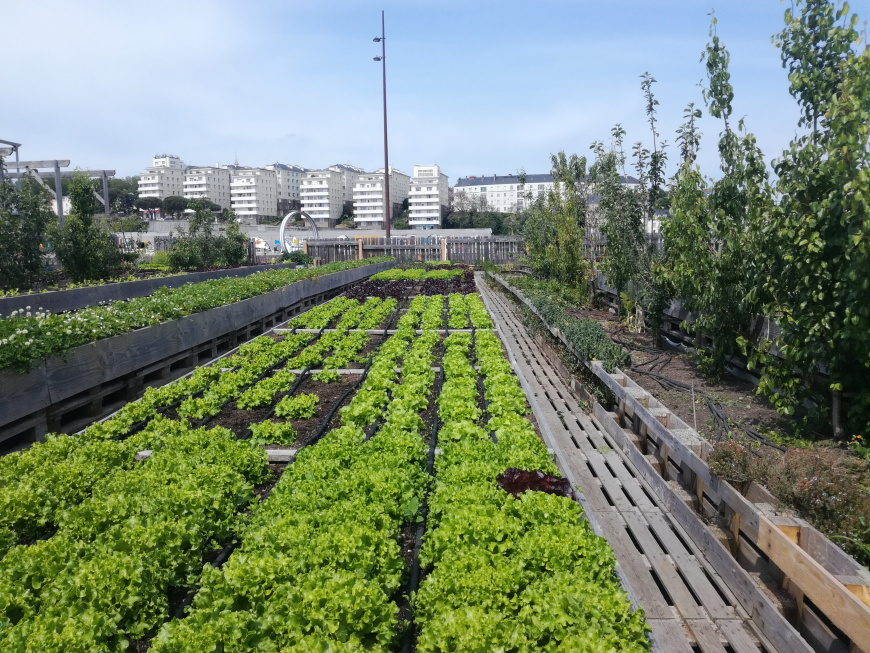Some Known Factual Statements About City Blooming
Table of ContentsEverything about City BloomingThe Best Guide To City BloomingThe 20-Second Trick For City BloomingThe Of City BloomingThe Ultimate Guide To City Blooming
Intrigued in growing food for sale in the City of Chicago? Below is a list of often asked questions concerning the regulations and policies that cultivators must think about when intending an urban agriculture project.
The zoning amendment does not change any various other codes managing composting, building permits, acquiring or renting City had residential property, company licenses or ecological contamination. There are existing codes that control these concerns and they continue to be completely impact and might apply to your job. Neighborhood yards are commonly had or handled by public entities, public organizations or community-based organizations and preserved by volunteers.
Urban farms grow food that is planned to be offered, either on a nonprofit or for-profit basis. Because of their business purpose, urban ranches require a service certificate. Yes. A community yard is permitted to sell excess create that was expanded on site if the sales are accessory or subordinate to the yard's main objective described above.
5 Easy Facts About City Blooming Explained
The amount of garden compost material can not exceed 25 cubic yards at any kind of given time according to the criteria in 7-28-715 of the City's Municipal Code. Since the soil at a lot of new garden websites needs changing, garden compost, soil, timber chips, or other materials can be acquired to construct or improve the growing space.

If a structure authorization is called for then the hoophouse will certainly be thought about an accessory structure. You can learn even more concerning the structure license requirements by getting in touch with the Division of Buildings. The 25,000-square-foot dimension limitation is planned to stop a single community garden from dominating an offered block or interfering with the block's existing residential or business personality.
The limit does not apply to yards situated in Public Open Room (POS) districts. Can there be even more than one neighborhood garden that is 25,000 square feet on a solitary block? Fence is not needed, nonetheless, yards that have large car parking locations may be required to install fence or various other landscaping features.
Not known Factual Statements About City Blooming
B1 & B2 districts require that all commercial usage tasks be carried out inside your home. R districts limit industrial activity. The laws reflect the purpose and intent of the Zoning Code. Is fence needed for urban farms? Yes. Fences might be required, along with landscaping and testing, for specific parking lot and outside work or storage areas depending upon area and the particular activity happening.
Urban farms need structure permits and zoning authorizations prior to building (landscaping). Various other types of city review might be called for depending on specific structures, activities, size, landscape design, licensing, public heath and stormwater administration concerns.
The Division of Organization Affairs and Consumer Protection can help establish the details type of business license that's called for. Off street parking is needed for a lot of business projects in Chicago. The needed number of car parking areas is based on the number of employees functioning on site and not the square footage of the expanding space.
City Blooming - Truths

A metropolitan ranch can offer compost material created on site, nonetheless, the operation should conform with the guidelines in 7-28-715 of the Chicago Municipal Code. Aquaponic systems are resource permitted indoors on metropolitan farms in many zoning districts.
Approximately 5 hives or nests of honey might be kept as an accessory use. Beekeepers should sign up with the Illinois Division of Farming. To learn more about the suggested zoning amendment you might call the Division of Housing and Economic Development, Bureau of Preparation and Zoning at 312.744.8563.
, which takes place in country areas at the side of suburban areas.
Excitement About City Blooming
It can include a motion of organic cultivators, "foodies" and "locavores", who look for to create social media networks based on a shared values of nature and community holism. These networks can create using formal institutional support, coming to be integrated into local community preparation as a "change town" motion for lasting city development.
In either instance, the more straight accessibility to fresh veggie, fruit, and meat products that may be become aware through city agriculture can boost food protection and food security while decreasing food miles, leading to reduced greenhouse gas emissions, thereby adding to climate modification reduction. Several of the initial proof of urban agriculture comes from Mesopotamia.